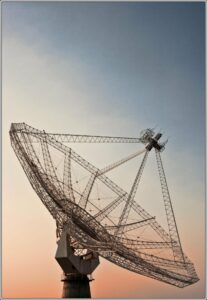Pakistan’s Space and Upper Atmosphere Research Commission (SUPARCO) sent two satellites last July into space from a launching facility in China after often being criticized for not being competent enough like its Indian/Chinese counterparts. According to a local media report, one of the satellites launched the PakTES-1A has been developed by Pakistani engineers to primarily aim at remote sensing. Moreover, it had been reported that the completion of the satellite was a tough task as it could not afford delays.
A surprise as it may be, one of the satellites launched the PakTES-1A, which was indigenously designed and developed by Pakistani engineers. Primarily aimed at remote sensing, the satellite is providing promising results, meeting or even exceeding expectations, a senior official of Suparco says.
Talking about the development phase of the satellite, the official says that it was a tough task to complete it on time because the launch date had already been fixed and a delay of not even a day could be afforded.
“The other satellite, PRSS-1, developed by China and Pakistan in collaboration, was due to launch on July 9, and PakTES-1A had to be co-launched, thus the Pakistani engineers worked day and night to have it ready by then,”
Pakistan has long been recognized for its nuclear and missile capabilities but the country is still lagging in many areas, including space exploration, semiconductors, antenna design, radio-frequency (RF) engineering, high-performance computing, and astronomy. However, by investing in radio astronomy research and development, Pakistan has the potential to improve its technical capabilities in telecommunications, defense, medical imaging, and big data sciences.
Radio astronomy is a field that studies the universe through the analysis of radio waves emitted by celestial objects. From pulsars to black holes, radio astronomy has played a critical role in our understanding of the universe. Furthermore, radio astronomy research can also lead to spin-off technologies that can benefit other industries.
One of the best examples of the potential of radio astronomy research is Wi-Fi. Astronomers at Australia’s national space agency CSIRO developed methods to realign scrambled radio signals from black holes, leading to the discovery of this widely used technology. Similarly, the data acquisition mechanisms in radio astronomy and magnetic resonance imaging (MRI) have similarities that can potentially lead to advances in medical imaging technologies.
Research organizations, like the National Center of Physics (NCP) in Islamabad, and HEJ Research Institute of Chemistry in Karachi, can also join the efforts by providing science goals. A lot of interdisciplinary research in areas like astrophysics, astroparticle physics, astrochemistry, astrobiology, exoplanet atmospheres, and solar physics can be done by promoting collaborations between various institutes of Pakistan that have their own expertise in specific areas. This will foster a culture of collaboration among various R&D organizations in Pakistan and help pave the way for more research avenues in the future.
The development of new antennas and RF engineering techniques can benefit multiple industries, including telecommunications, defense, and medical imaging. Radio telescopes require sophisticated antennas and RF engineering to detect and process radio signals from celestial objects. Developing these technologies for radio astronomy can lead to advances in antenna design and RF engineering that can be applied in other industries.
Radio astronomy research can also provide economic and human resource development benefits. Radio astronomy facilities require highly skilled personnel to operate and maintain, which can lead to the development of a highly skilled workforce. These skilled individuals can then contribute to other industries and help to strengthen the country’s economy.
Moreover, radio astronomy research can attract investment and funding from international organizations and institutions, leading to economic growth and development. The construction and operation of a radio telescope facility can also lead to the development of supporting industries, such as the production of specialized components and materials.
To move forward, Pakistan needs to not only think about its socioeconomic development but also about progress in science and technology. The country needs to pursue big scientific goals which can help forward our civilization as explorers, as Muslims did during the Golden Age. Unfortunately, we have abandoned this pursuit, and as a result, we are paying the price of lagging behind in many areas, including basic socioeconomic economic development.
To encourage Pakistan’s private sector to invest in such projects, the government can incentivize them by providing tax benefits, similar to the practice of donating to registered charities in many parts of the world. This would encourage businesses to take an active role in building a better future for Pakistan by investing in science and technology.
Investing in radio astronomy should be treated as a strategic national investment. Pakistan has the potential to unlock the power of radio astronomy and take its place among the stars, contributing to the global knowledge economy and positioning itself as a leader in science and technology.
- Read More:
Twitter Goes into Meme Mode as Babar Azam, Virat Kohli, Cristiano Ronaldo Lose Blue Ticks






 No More Fake Sick Leaves: This AI Can Detect Cold From a Person’s Voice
No More Fake Sick Leaves: This AI Can Detect Cold From a Person’s Voice